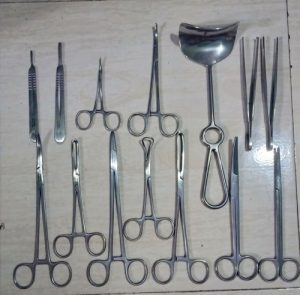Until recently, having heart surgery was synonymous with heavy surgery and slow recovery. While this remains the case for some patients, surgery without an open chest and scar is developing more and more.
Heart surgery
The term still evokes open chest operations, under general anesthesia and lasting several hours with the help of open heart surgical instrument set. With, sometimes, the heart put at rest and relayed by a machine which oxygenates the blood and makes it circulate in the body. Once awake, the patient takes several weeks to recover. But if these heavy operations are still necessary in some cases, it is more and more often possible to repair the heart by making only a tiny hole in the thigh!
This is enough to bring catheters (long, thin and flexible tubes) into an artery or a vein, which thread their way to the vital organ so that the necessary care can be delivered. This is excellent news at a time when heart disease is the leading cause of death in the world, with 17.5 million deaths per year, or 31% of total global mortality.
The first beneficiaries of this scar-free cardiology, the coronary arteries. Under the effect of smoking, diabetes, cholesterol, obesity or even arterial hypertension, they tend to become blocked. It’s atherosclerosis. To overcome this problem, the surgical solution which has prevailed for a long time consists in opening the thorax and performing one or more bypass operations by using a small piece of the patient’s artery or vein taken.
Follow-up after heart valve replacement
What is it about?
A heart is made up of 4 chambers (2 ventricles and 2 atria) and 4 valves. Valves are used to temporarily shut off different parts of the heart. When they open, they let blood pass. When they close, they retain blood. There are 2 valves between the atria and the ventricles inside the heart, 1 valve between the heart and the aorta, and 1 valve between the heart and the pulmonary artery.
Common heart valve abnormalities fall into two categories:
Valve stenosis: the valves no longer open properly, often due to a problem with calcification;
Valve insufficiency: the valves no longer close completely.
Some people tend to develop valve abnormalities quite early in their life. Sometimes the abnormalities do not appear until later in life, eg due to disease (rheumatic disease), inflammation or infection that damages the valve.
The impact of a valve defect on the heart can be so severe that the damaged valve must be replaced with an artificial valve.
There are 2 types of artificial valves:
Mechanical valves are made of durable metal and plastic. They have an unlimited lifespan, but they emit a “click” each time they are opened and closed. In addition, they require the use of anticoagulant drugs for life.
Biological valves are made from tissue of animal origin, usually from pork or beef. They are therefore more natural, but may show signs of wear over time. However, their advantage is that it is no longer necessary to take anticoagulant therapy for life.
After heart valve replacement, proper follow-up is essential to assess valve function and quickly detect any complications.
The most common complication is thrombosis in the prosthetic valve. In this case, the valve is blocked by a blood clot. In addition, infection can also occur around the valve or the new valve does not close properly and there is a risk of leakage. Sometimes there is hemolysis which is difficult to see. Hemolysis means the breakdown of red blood cells, which can lead to anemia. Finally, during the first week after the operation, the pericardium may become inflamed at the site of the incision.
For more details, please visit: jimymedical.co.uk
 Bloggers Trend Keeping You Up To Date
Bloggers Trend Keeping You Up To Date




